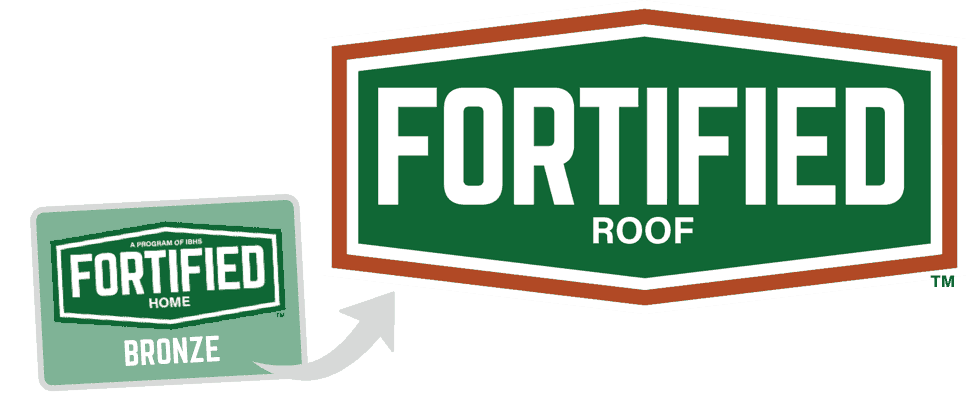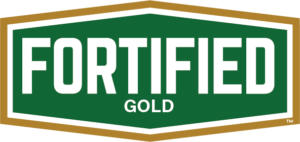How to Use this Supplement
The FORTIFIED Home™ Hail Supplement is not intended to be used alone. Rather, it is intended to be used in conjunction with the 2022 FORTIFIED Home™–High Wind standard.
- Meeting the requirements of the high wind standard will result in a FORTIFIED designation (either FORTIFIED Roof™, FORTIFIED Silver™, or FORTIFIED Gold™) under FORTIFIED Home–High Wind.
- Meeting the requirements of this hail supplement in addition to those of the high wind standard will result in a FORTIFIED designation (either FORTIFIED Roof™, FORTIFIED Silver™, or FORTIFIED Gold™) under FORTIFIED Home–High Wind & Hail.
Requirements
Selecting and installing a qualified steep-slope (2:12 or greater) impactrated roof covering (re-roof or new roof installation)
Asphalt Shingles
Shingle Impact-Resistance Requirement
IBHS Roof Shingle Hail Impact Rating Excellent or Good
The IBHS Impact Resistance Test Protocol for Asphalt Shingles is a test standard developed in 2019 to evaluate the hail performance of new asphalt shingle roof products. The test method uses state-of-the-art hailstone characteristics, kinetic energies, and damage assessment technology to evaluate new shingle performance against hail. IBHS has published, and will periodically refresh, the performance ratings for the most widely sold, basic impact-resistant shingles when subjected to 2-in. impacts according to the test protocol. Products with a Good or Excellent rating must be used. Refer to Appendix A for the list of IBHS roof shingle hail impact ratings as of October 1, 2019.


Clay and Concrete Roof Tiles
Tile Impact-Resistance Requirements
FM 4473 Class 4
FM 4473 is a test standard administered by Factory Mutual Research that uses pure water frozen ice balls to evaluate impact resistance of new rigid roof covering materials (like concrete tile, clay tile, or slate). It involves firing the ice balls from a sling or air cannon at the roofcovering product. A Class 4 rating requires the product to still be functional following two impacts in the same spot with 2-in. ice balls. Clay and concrete roof tiles must meet a Class 4 impact rating
Metal Panels
Metal Roof Impact-Resistance Requirements
UL 2218 Class 4
UL 2218 is a test standard developed by Underwriters Laboratories for assessing the impact resistance of new flexible roofing products, like metal panels or metal shingles. It involves dropping steel balls of varying sizes from heights designed to simulate the energy of falling hailstones. Class 4 indicates the product was still functional after being struck twice in the same spot by 2-in. steel balls. Class 4 rated products must be used.
It should be noted that while impact-resistant metal roofs have good impact resistance and are likely to survive impact from most hailstone sizes without functional damage, metal roofs can be vulnerable to aesthetic damage since hail can cause permanent indentations in the roofing panels. Use of metal roofing products with granular coatings may reduce the visibility of small indentations.

Other Roof Coverings
For all other roof coverings, documentation must indicate that the roof cover has either a UL 2218 Class 4 rating or FM 4473 Class 4 rating to be eligible.
For superior protection from hurricanes, tornadoes and other severe weather events, choose FORTIFIED Gold.
The National Standard for Resilience



* Required in Hurricane Prone Areas Only
** Required for the optional Hail
Supplement to a FORTIFIED designation.

